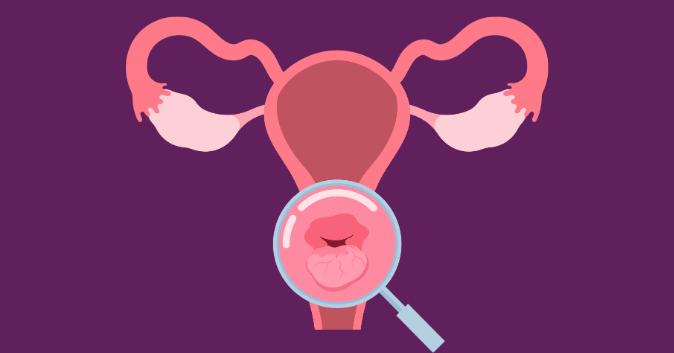Introduction
Navigating the intricacies of vaginal health can sometimes feel like deciphering a complex puzzle. Among the many phenomena that occur within the female reproductive system, three often misunderstood aspects are vaginal discharge, fluid of arousal, and cervical mucus. While they might seem similar at a glance, each serves distinct purposes and indicates different states of reproductive health. In this article, we delve into the depths of these bodily fluids to unravel their differences, functions, and significance. So, let’s embark on a journey to demystify the discharge of vaginal, arousal fluid, and mucus in the cervix.
Why do we need to know the difference between Vaginal Discharge, Arousal Fluid, and Cervical Mucus?
Understanding the distinction between discharge of the vagina, fluid of arousal, and mucus in the cervix is paramount for several reasons. First, it enables individuals to gauge their reproductive health accurately. By recognizing the subtle variations in these bodily fluids, individuals can identify abnormalities or irregularities that may indicate underlying health issues such as infections, hormonal imbalances, or fertility issues.
Secondly, knowing the difference helps in optimizing sexual health and intimacy. Understanding the role of arousal fluid, for instance, enhances awareness of sexual responses and promotes comfort and satisfaction during intercourse. Additionally, discerning changes in cervical mucus aids in fertility tracking and family planning, empowering individuals to make informed decisions regarding conception or contraception. Overall, knowledge of these bodily fluids fosters proactive health management, facilitates early intervention when necessary, and empowers individuals to prioritize their reproductive well-being.
Vaginal discharge and it’s meaning

Vaginal discharge, a common occurrence in individuals with vaginas, refers to the fluid produced by the cervix and vaginal walls. It plays a crucial role in maintaining vaginal health by flushing out dead cells and bacteria, thus preventing infections. The consistency, color, and odor of discharge of the vagina can vary throughout the menstrual cycle, serving as indicators of hormonal fluctuations and overall reproductive health. While some amount of discharge is normal, changes in its characteristics could signal underlying issues such as infections or hormonal imbalances.
Also Read: Understanding the Vagina: Functions, Health and Abnormalities
Deciphering Arousal Fluid

Arousal fluid, often mistaken for discharge of the vagina, is a transparent or slightly cloudy fluid that the body produces in response to sexual arousal. Unlike vagina discharge, which is present throughout the menstrual cycle, fluid of arousal typically occurs during sexual stimulation or arousal. This lubricating fluid facilitates intercourse by reducing friction, enhancing pleasure, and aiding in the movement of sperm. While its production is a natural physiological response, excessive or inadequate fluid of arousal could affect sexual comfort and intimacy, highlighting the importance of understanding one’s body and its responses.
What is female arousal fluid
Female arousal fluid, in simple terms, is a natural secretion from the female body during sexual excitement. This fluid lubricates the genitals through sexual intercourse and enhances pleasure. It also represents the physical readiness for sexual intercourse.
Here are the key features of Female Arousal Fluid:
- Source – Mostly from Bartholin’s and skenes glands, with some moisture from the vaginal walls as a result of increased blood flow during arousal.
- Composition – A mixture of watery and proteinaceous with some enzymes and mucous-like substances. Its pH and consistency also vary typically according to natural vaginal environment.
- Purpose- : Lubrication reduces discomfort and friction during sexual activity. Protection: doing healthy pH and lessening irritation or infection. Signaling- indicates arousal and physical readiness to get intimacy.
- Variability- Highly variable in terms of volume and consistency changes from one individual to the other or even within the same person, such changes being a function of hormonal levels, hydration, health status, and emotional state.
Exploring Cervical Mucus

Cervical mucus, secreted by the cervix, serves various purposes throughout the menstrual cycle, primarily relating to fertility and reproductive health. Its consistency and appearance undergo distinct changes under the influence of estrogen and progesterone, thereby creating a hospitable environment for sperm survival and transportation. By observing changes in cervical mucus, individuals can track their fertility status, identify ovulation, and optimize the chances of conception. Moreover, abnormalities or irregularities in the cervical mucus could provide valuable insights into underlying fertility issues or hormonal imbalances, prompting timely intervention or consultation with healthcare professionals.
Also Read: A Comprehensive Guide to Cervical Cancer
Distinguishing Between the Three: (Vaginal Discharge, Arousal Fluid, and Cervical Mucus)
While valva discharge, fluid of arousal, and mucus in the cervix may share similarities, several distinguishing factors set them apart. Discharge of vaginal is a constant presence, serving as a natural lubricant and cleansing agent for the vagina. On the other hand, arousal fluid is transient, occurring in response to sexual stimulation and facilitating comfortable intercourse. The mucus in the cervix, meanwhile, undergoes cyclical changes tied to the menstrual cycle, playing a crucial role in fertility and conception. By understanding these disparities, individuals can better interpret their body’s signals and effectively address potential concerns.
The difference in Consistency and Presence:
- Discharge of the vagina is a consistent presence throughout the menstrual cycle, providing lubrication and maintaining vaginal pH balance.
- Arousal fluid, in contrast, is transient and directly linked to sexual arousal or stimulation, serving to enhance comfort and pleasure during intercourse.
- The mucus in the cervix exhibits cyclical changes, being abundant and stretchy during ovulation to facilitate sperm transport, while relatively minimal during other phases of the menstrual cycle.
Difference in Color and Odor:
- Valva discharge typically ranges from clear to white or slightly cloudy, with variations in color indicating potential health issues.
- Fluid of arousal is usually clear and odorless, distinguishing it from valva discharge which may have a distinct odor if infection is present.
- The mucus in the cervix tends to become clear, slippery, and stretchy during ovulation, signaling peak fertility, while being thicker and less conducive to sperm survival during non-fertile phases.
Difference in Timing and Triggers:
- Discharge of the vagina is a continuous process, unaffected by sexual activity, although it may increase slightly during arousal or ovulation.
- Arousal or excitement fluid is triggered specifically by sexual arousal or stimulation and is typically produced in response to foreplay or sexual contact.
- mucus production in the cervix is hormonally regulated, peaking during ovulation to facilitate conception and declining during other phases of the menstrual cycle.
Difference in Function and Purpose:
- Discharge of the vaginal serves as a protective barrier against infection, helps flush out bacteria and debris, and maintains vaginal moisture.
- Exitement fluid aids in sexual lubrication, reducing friction during intercourse, and enhancing pleasure for both partners.
- To maximize the odds of a successful conception, cervical mucus creates an environment that is favorable for sperm survival and movement.
Understanding these distinct characteristics and functions of discharge of the vagina, arousal fluid, and mucus in the cervix empowers individuals to recognize normal variations and identify potential abnormalities. By paying attention to their body’s signals and seeking medical advice when necessary, individuals can ensure optimal reproductive health and overall well-being.
Vaginal Discharge Treatment: When to Seek Help
Maintaining vaginal health is paramount for overall well-being. If you experience abnormal discharge of the vagina accompanied by itching, burning, or foul odor, it’s essential to seek medical attention promptly. Depending on the underlying cause, Vaginal Discharge treatment may involve antibiotics for bacterial infections, antifungal medications for yeast infections, or hormonal therapy for imbalances. Additionally, practicing good hygiene, wearing breathable underwear, and avoiding harsh chemicals can help prevent recurrent issues and promote vaginal health.
In most cases, discharge of the vagina is a normal and healthy part of the body’s natural processes. However, certain changes in color, consistency, or odor may indicate an underlying issue that requires medical attention. If you experience any of the following symptoms, it’s important to consult a healthcare provider:
1) Persistent itching or irritation in the vaginal area
2) Unusual changes in the color or odor of Vaginal Discharge
3) Pain or discomfort during urination or sexual intercourse
4) Abnormal vaginal bleeding or spotting outside of your menstrual period
Depending on the underlying cause, treatment for abnormal discharge of valva may include over-the-counter or prescription medications, such as antifungal creams or antibiotics. In some cases, lifestyle changes, such as wearing cotton underwear and practicing good hygiene, may also help alleviate symptoms.
Infertility Treatment and IVF Hospitals
For individuals struggling with infertility, understanding the nuances of valva discharge, fluid of arousal, and mucus in the cervix can be particularly relevant. Conditions such as endometriosis, polycystic ovary syndrome (PCOS), or blocked fallopian tubes can impact reproductive function and conception. In such cases, seeking specialized care from fertility experts from an IVF hospital in Surat like Nimaaya IVF Center becomes crucial. With state-of-the-art technology and personalized Infertility Treatment plans, these facilities offer hope and support to couples on their journey to parenthood.
Conclusion:-
In conclusion, understanding the nuances of vaginal discharge, fluid of arousal, and cervical mucus is essential for maintaining optimal reproductive health and well-being. By recognizing their differences, functions, and significance, individuals can better interpret their body’s signals, identify abnormalities, and seek timely medical intervention when necessary. Whether it’s ensuring vaginal hygiene, enhancing sexual comfort, or optimizing fertility, knowledge of these bodily fluids empowers individuals to make informed decisions and prioritize their reproductive health. So, let’s embrace this knowledge and embark on a journey towards holistic well-being.
FAQ
Q: Difference between vaginal discharge and cum
Difference Between Vaginal Discharge and Cum:
- Vaginal Discharge: A natural, daily fluid produced by the vagina to maintain hygiene and signal fertility. It varies in texture and appearance throughout the menstrual cycle (e.g., creamy, clear, or sticky).
- Cum (Ejaculatory Fluid): A fluid released during orgasm, produced by the Skene’s glands near the urethra. It’s clear or milky and occurs only during sexual climax.
In short, discharge is a regular bodily function, while cum is orgasm-related.
Q:Difference between discharge and being wet
Difference Between Discharge and Being Wet:
- Discharge: A natural fluid produced daily by the vagina to maintain hygiene, with varying consistency based on the menstrual cycle. It’s unrelated to sexual arousal.
- Being Wet: Refers to arousal fluid produced during sexual excitement, which is clear, slippery, and specifically for lubrication during intimacy.
In short, discharge is routine, while being wet is tied to arousal.
Q: Why do I have so much discharge
Excessive vaginal discharge can be caused by:
- Hormonal Changes: Around ovulation, pregnancy, or birth control use.
- Infections: Such as yeast infections or bacterial vaginosis.
- Irritants: Soaps, detergents, or tight clothing.
- Stress or Diet: Affecting hormonal balance.
If the discharge is abnormal (smelly, coloured, or causes irritation), consult a doctor.








